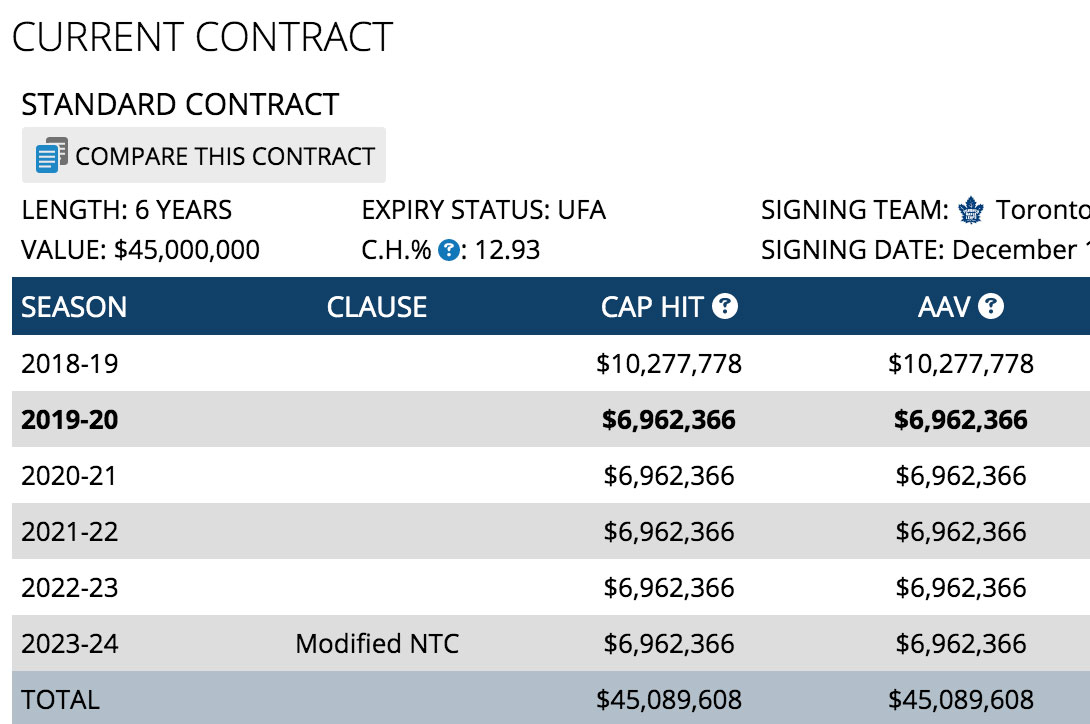TORONTO — Kyle Dubas kicked off Toronto Maple Leafs training camp by calling a moratorium on public comments about the Mitch Marner contract stalemate.
That’s fine. It really shouldn’t last too much longer.
Because if Marner is serious about staying with his hometown team — and to this point, there’s been no indication he wants out — it’s going to be in his best interest to sign a new deal with the Leafs before the puck drops Oct. 2 on the regular season.
Should he remain unsigned after opening day there will be consequences. And those consequences mostly appear to negatively impact Marner’s ability to leverage a better offer than what he’s received so far.
Dubas wasn’t splitting hairs when he told reporters Thursday that this situation bears little resemblance to the one the Leafs found themselves in with William Nylander last fall. Beyond the obvious — they are both dynamic young forwards absent from camp because they couldn’t reach an agreement with Toronto on a second contract — there’s an entirely different set of circumstances underpinning these talks.
What it boils down to is this: Unlike Nylander, Marner can’t count on the Leafs making their absolute best offer in the hours before a Dec. 1 deadline to preserve his ability to play this season.
The nuances of the salary cap simply won’t allow it. This season the Leafs are a team that will use the long-term injury (LTI) provision from start to finish, which means that they won’t accrue additional cap space with each passing day like they did last year while letting 60 days pass before signing Nylander.
“That is a significant difference,” said Dubas, when asked about how LTI will impact contract talks.
“It’s obviously something that we have to plan for and I think without boring everybody with the nuances of the LTI calculations and contract calculations, as [negotiations] get in-season it is a factor,” he added.
[snippet id=4167285]
This is why the Leafs reacquired David Clarkson’s contract in a trade with Vegas in July.
It’s left them with enough cap space to give Marner roughly an $11-million AAV on his new deal with Clarkson, Nathan Horton and Zach Hyman starting the year on LTI.
However, any offer in that amount comes with a time restriction because contracts signed after opening day carry a higher, pro-rated cap hit — one the Leafs would have trouble accommodating by mid-October even if they carry a roster with just 20 players, which head coach Mike Babcock hinted they may do: “You’ve got 23 guys… well, I don’t know, we might have 20 guys eventually,” he said Thursday.
The only guarantee here is that Brandon Pridham, the Leafs assistant GM and in-house capologist, will earn his pay cheque this season. He’s going to be performing cap gymnastics on a daily basis and may even have to ice a short-handed lineup occasionally when minor injuries crop up.
As for how all of this directly impacts the Marner negotiations, let’s do a quick refresher on how Nylander’s $45-million, six-year deal was accounted for under the salary cap (courtesy of capfriendly.com).

Toronto was able to push those negotiations until Dec. 1 because it could absorb an elevated cap hit of more than $10-million in 2018-19 (while receiving a slight cap benefit during Years 2-6 of the deal).
The team can’t repeat that for Marner with a specific window already carved out to pay him and no additional room to maneuver — at least not without trading a significant player off the roster in the process.
What’s interesting is the Leafs don’t really become any more vulnerable to an offer sheet once the regular season starts because the pro-rated cap charge in Year 1 doesn’t apply when one of those is matched — as illustrated by the Ryan O’Reilly case with Colorado in February 2013 (the Avs carried a $5-million cap charge each year after matching the $10-million, two-year deal he signed with Calgary).
No wonder Dubas brushed aside any concerns about a rival team poaching his 22-year-old star if negotiations stretch into the season.
“The potential of an offer sheet has been there since July,” he said. “It’s a possibility, there’s no rules against it, it’s a mechanism which teams can use to acquire talent for their teams. If it happens, as we said leading into the draft, we’ll make our decision then and address it.”
Ironically enough, the Leafs might eventually need another team to offer sheet Marner if talks drag into late October or beyond because of the different way that cap hit would be calculated.
However, there’s no reason for this stalemate to last that long.
If Marner’s priority is to remain in Toronto, he will have seen the team’s best offer before the regular season begins with a visit from the Ottawa Senators. As a result, we should start viewing Oct. 2 as a significant deadline here.
“We don’t want to think about going into the season without Mitch on the roster on opening night,” said Dubas.
Should that happen, there might not be much more he can say or do to keep him in the fold.
[relatedlinks]







